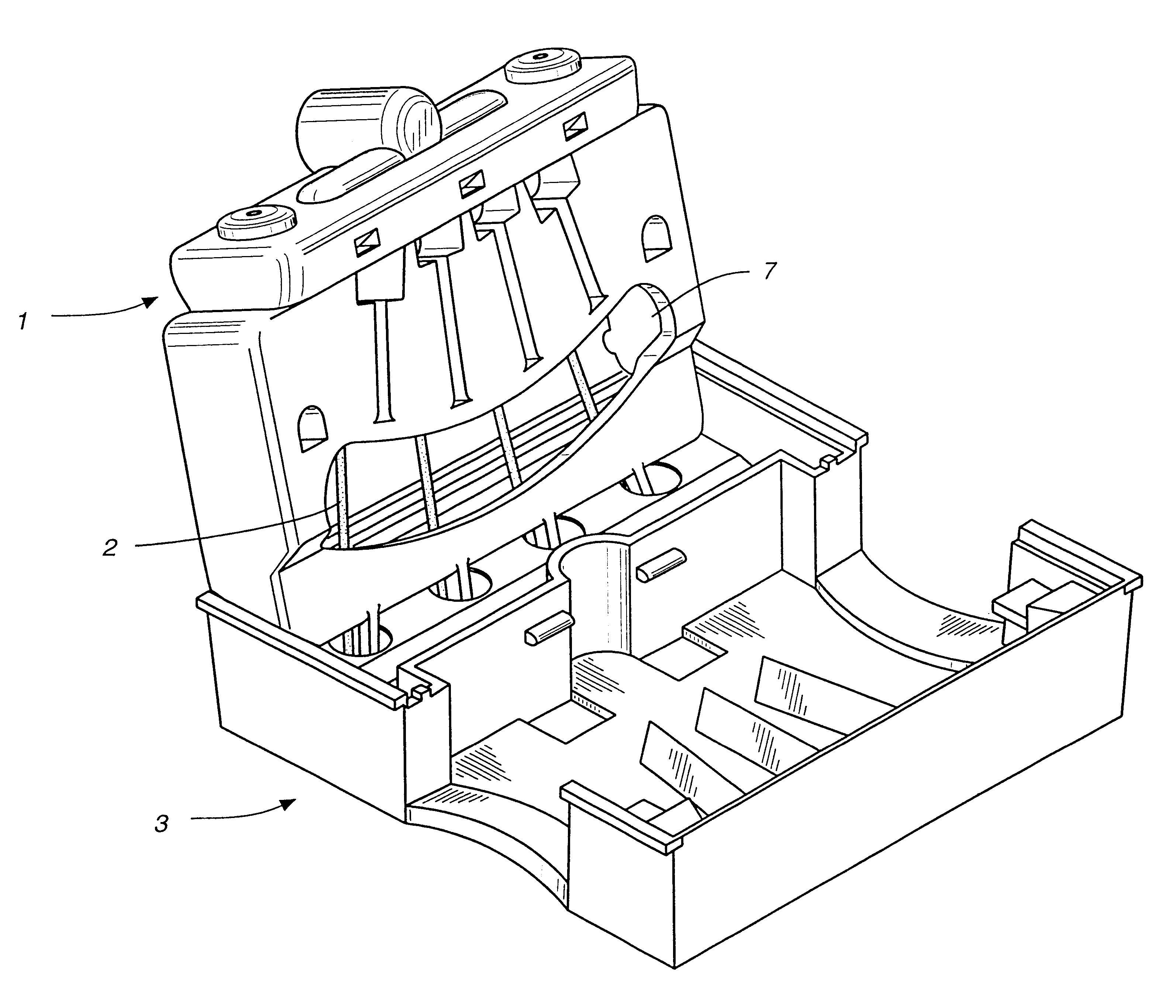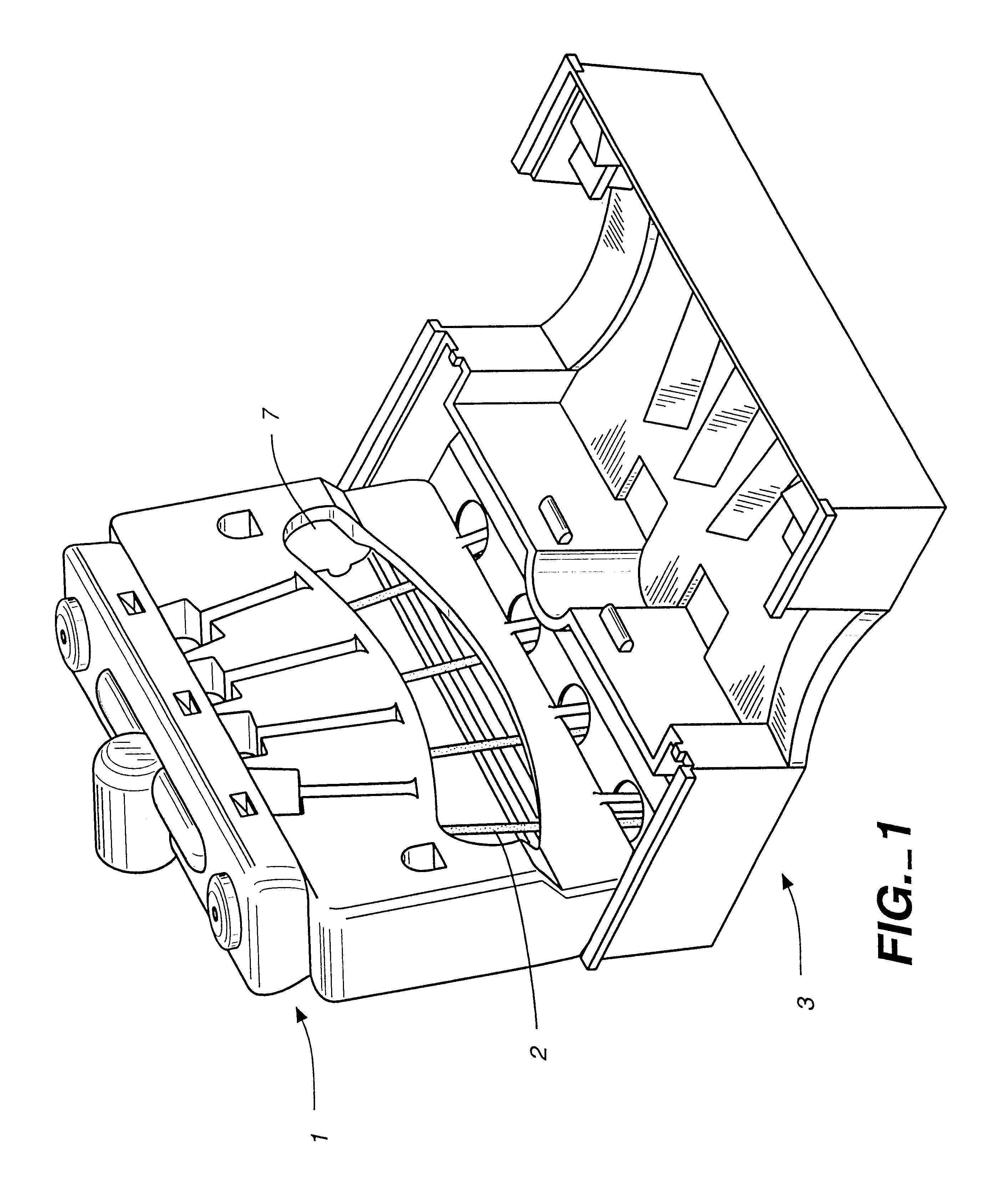Immunoassays in capillary tubes
a technology of immunoassays and capillaries, applied in the direction of fluorescence/phosphorescence, instruments, analysis using chemical indicators, etc., can solve the problems of poor quantitation and sensitivity, the elisa protocol may not be suited for all liquid assays, and the use of hazardous radioactive isotopes
- Summary
- Abstract
- Description
- Claims
- Application Information
AI Technical Summary
Benefits of technology
Problems solved by technology
Method used
Image
Examples
example 1--
Capillary-Tube Surface Preparation
The surface of borosilicate, glass capillary tubes (Drummond Scientific, Broomall, Pa.) was treated with a silanizing reagent in accordance with the process for Aquasil.RTM. silanization coating in accordance with Example 9, coating with a protein substrate conjugated to a reactive protein, blocking the capillary tubes, and drying and incubating. The lengths of individual capillary tubes were 3.5 centimeters (cm) with an inner diameter of 0.65 millimeters (mm) and an outer diameter of 1 mm. By using these capillary tubes, one achieves a high surface area to volume ratio and minimizes the use of reagents. Other capillary tube dimensions can be used.
The high surface area to volume ratio allowed for a short two-minute incubation. Tubes having other inner diameter dimensions were also examined, however, the 0.65 mm inner diameter tubing was found to be most useful with fresh, raw milk samples, which often contain fat globules that can be as large as sev...
example 2-- synthesis
Example 2--Synthesis of Antigen Conjugates for Coating Capillary tubes.
The antigen conjugates, for coating onto the surface of the capillary tubes, were prepared by binding the appropriate .beta.-lactam drug, such as Penicillin G, Ampicillin, Cloxacillin, Cephapirin, Ceftiofur, Amoxicillin and the like; to a carrier protein either bovine serum albumin (BSA) or a polypeptide copolymer consisting of lysine and alanine subunits (Sigma Chemical Co., St. Louis, Mo.). The covalent linking of antigen to carrier protein was accomplished through the use of conventional homobifunctional or heterobifunctional linkers, such as Succinimidyl 4-(N-maleimidomethyl)cyclohexane-1 -carboxylate (SMCC), Bis(sulfosuccinimidyl) suberate, and 1-Ethyl-3-(3-Dimethylaminopropyl)-carbodiimideHydrochloride(Pierce Chemical Co., Rockford, Ill.) in accordance with the process provided by the manufacturer.
example 3--
General Procedure for Coating Antigen-Conjugate on the Surface of Capillary Tubes.
After the silanizing surface treatment, the capillary tubes were incubated for from about 30 minutes to 24 hours in a buffered solution of the antigen-conjugate (20-40 .mu.g / ml). The incubation temperature was usually 4-7.degree. C., although occasionally room temperature incubation was used. The capillary tubes were removed, washed with distilled water, dried in a stream of compressed air, and then incubated in a solution of bovine-serum albumin (0.1% BSA in PBS-phosphate buffered saline-pH=7.2, 0.05% Proclin 300 (Supelco) a biocide) for 1 hour at room temperature. The purpose of this incubation with BSA was to block any solution regions of the surface that were not coated by the antigen-conjugate. The tubes were again removed, washed with distilled water and dried in a stream of compressed air (20-30 psi). They were stored in the dark, at room temperature in a sealed, foil pouch with an indicating de...
PUM
| Property | Measurement | Unit |
|---|---|---|
| volumes | aaaaa | aaaaa |
| volumes | aaaaa | aaaaa |
| volumes | aaaaa | aaaaa |
Abstract
Description
Claims
Application Information
 Login to View More
Login to View More - R&D
- Intellectual Property
- Life Sciences
- Materials
- Tech Scout
- Unparalleled Data Quality
- Higher Quality Content
- 60% Fewer Hallucinations
Browse by: Latest US Patents, China's latest patents, Technical Efficacy Thesaurus, Application Domain, Technology Topic, Popular Technical Reports.
© 2025 PatSnap. All rights reserved.Legal|Privacy policy|Modern Slavery Act Transparency Statement|Sitemap|About US| Contact US: help@patsnap.com



